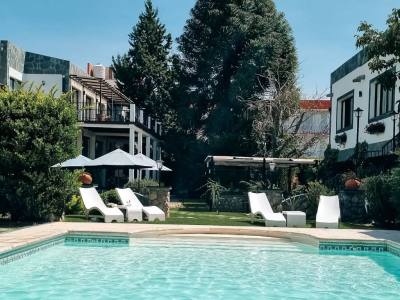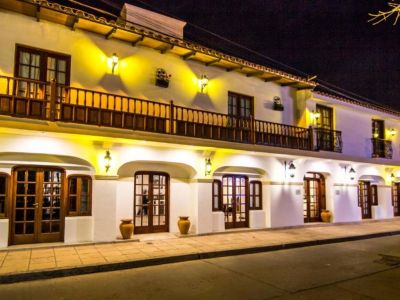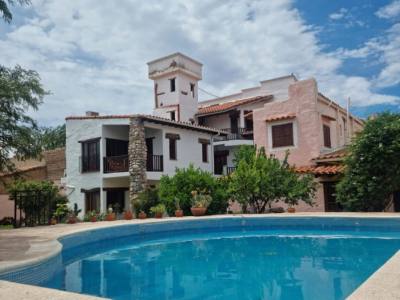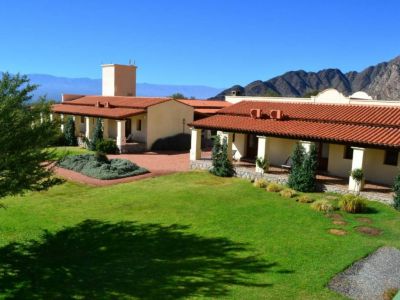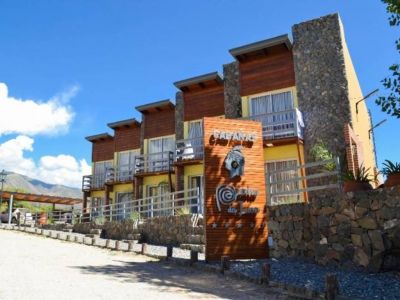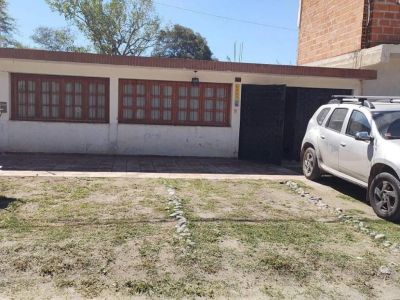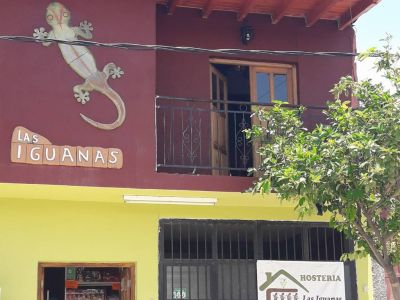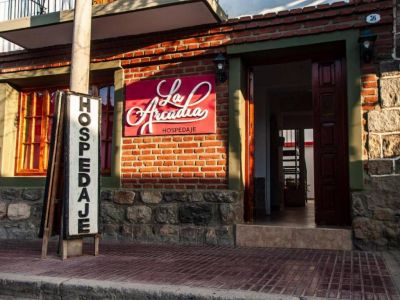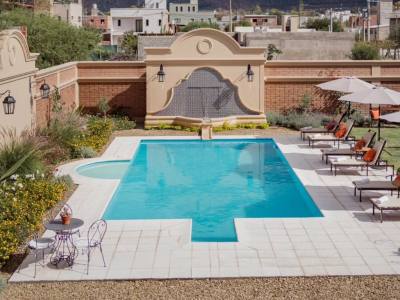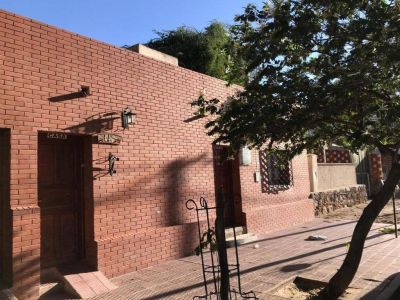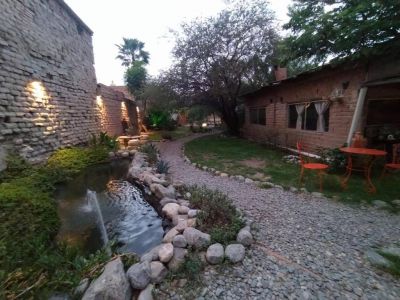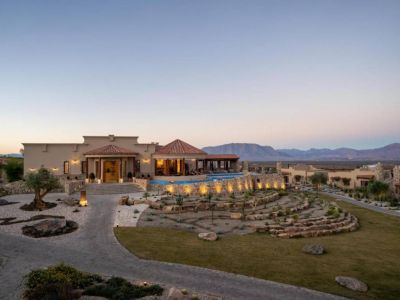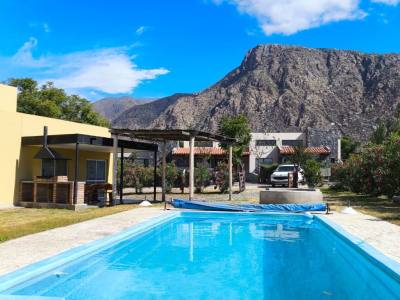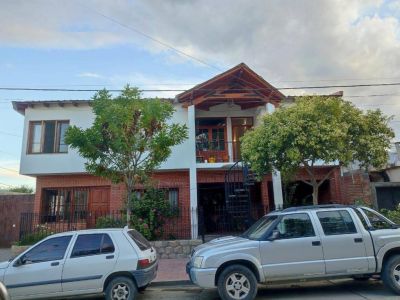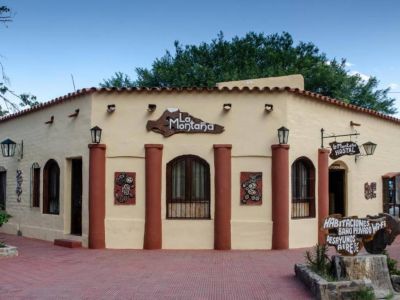Weavers in charge of huge looms open the doors to their houses patios. Their skilled hands draw decorative trims of exquisite designs and color combinations in the same space where their families spend a day-to-day life.
After riding many kilometers over a dirt road at an unthinkable place, a small group of houses built in adobe bricks of the same color as the soil appeared out of the landscape. Lost in the mountain, we could only see dirt and hear the sounds of silence.
We started our tour around Cafayate straight to the Craftsmen’s Road, or El Colte, at Seclantás. An old green sign confirmed our arrival and we decided to talk with a resident. His index finger pointing out at a dirt road helped us meet some craftsmen working in the patios of huge houses as their children played on the mud.
We clapped our hands to call the attention of the Benavides family. At the back of the patio, we saw a woman weaving under a small cane roof. We asked permission to see how the loom operated and we were led towards her. This woman had prepared the warp of the loom and was beginning to draw the yarns through to form the weave.
Craftsmen at Work
Seated behind the long wood loom mounted directly on the ground, she handled a small wood stick on the upper part. She moved her hands upwards and downwards in order to separate the threads and pass the shuttle through the open shed carrying the filling yarn. Then, she grabbed the knitted piece with another wooden stick of the same width as the loom in order to tighten it.
We asked about the origin of the wool and she replied that they usually made the weavings with sheep and llama wool and then they spun, dyed and wove the yarn on the loom. They do not have any animals. The yarns are dyed in hot water with natural dyes and they use lemon as a mordant for the dye to adhere to the fiber and avoid fading away. Clothing is finished by ironing with a charcoal iron.
We were invited to see different kinds of ponchos and blankets already made and we were surprised by their quality. Ponchos are the best sold. Prices vary according to the patterns, the size and the weaving complexity. We thanked them for welcoming us and then we bade our farewell to go back to the road.
We headed along the same street and found a weaver at work. He was preparing his warp, that is, looping threads along the length of the wooden loom to form a series of parallel threads so as to loop the other threads on the other direction.
A Family of Weavers
He introduced himself as Arnaldo Guzmán. All his weavings laid on a very long table on display in the middle of a patio. Blankets, several ponchos with distinct patterns and colors, table runners, everything was in the sunshine and surrounded by nature. As it rarely rains, the patio is the usual family place.
They wove spun sheep wool. The brownish color came from dyeing it with nut shells. They also wove llama fibers, smoother and more delicate than sheep wool. They hung several bunches of dyed wool on ropes and they had to wait for them to be completely dried by the sun before being spun.
There we saw the typical ponchos from Salta with their black bow-tie on the opening for the head. But those were not the only ones, since new designs are created and made according to buyers’ trend.
Arnaldo mentioned, “I weave on the loom as my wife prepares, dyes, dries and combs the yarns. And she is in charge of the finishing touches, such as fringes, and of the last ironing stage. Even little children help to spin yarn and arrange the pieces already finished. Everybody is assigned a job”.
Family Secrets
Ever since he was a child, Arnaldo learned the secrets of the loom from his father. Thus, 30-year-old Arnaldo and his wife want their children to start this craft since childhood. Their little 5.year-old daughter spins yarn and their 9 year-old daughter, Malen, has her own miniature loom: she weaves belts and small pieces with the same patterns his father makes.
As we were about to set out, Arnaldo asked where we lived: “San Martín de los Andes, in the province of Neuquén”, we replied. To his surprise, Arnaldo showed us a spectacular poncho he had tailor-made for a man from our town. It is a small world and it is great to exchange handicrafts and cultures from one side of the map to the other.
A land teeming with history of Incas, Spaniards and the Calchaquí natives, Seclantás has served as a meeting point for patriots allied to General Belgrano when defeated in the battle of Vilcapugio and Ayohuma.
The short distance between Seclantás and the Calchaquí river encourages a booming economy as a result of vineyards, alfalfa, corn plantations, etc. Small family wine cellars produce delicious foot-pressed wine and mistella. Its downtown area is simple, but with a good layout and design. It boasts adobe houses, with wide corridors, cane roofs and it offers the chance to go fishing in search of silverside or simply go for a walk at sunset.
Mónica Pons
Eduardo Epifanio







